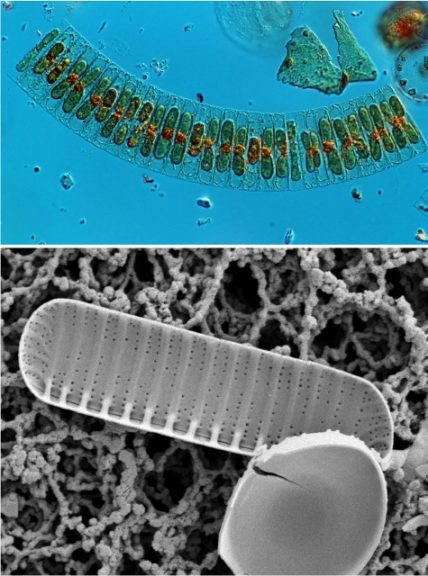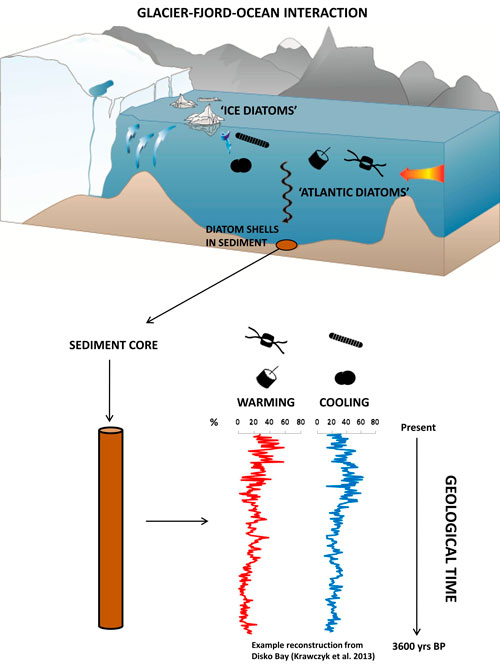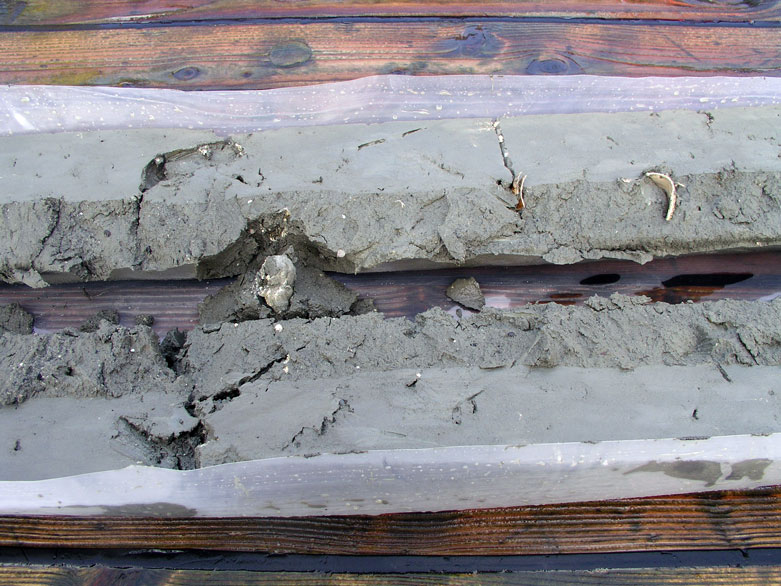Paleoceanography & Paleoecology of SW Greenland – ClimaGreen

Sea ice diatom: Fragilariopsis cylindrus. Top picture: life form. Bottom picture: fossil form
It is essential to study time series of past oceanic records because they can explain mechanisms behind changes in ocean-climate interactions, reveal potential effects of extreme, not yet observed climatic changes on marine ecosystems and place present-day decadal monitoring time series in a millennial perspective. The ‘ClimaGreen’ project focuses on modelling oceanographic conditions and marine productivity in West Greenland over the past 12,000 years (Holocene epoch) and projecting trends for the 21st century. ‘Knowing the past may reveal the future’. To achieve this, we use an innovative combination of data:
- Present-day monitoring: phytoplankton
- Remote sensing: sea ice, temperature, salinity
- Fossil time series from sediment cores: phytoplankton shells
The study area comprises a large fjord system (Godthåbsfjord) that extends to the shelf area (Fyllas Banke) and a marine bay (Disko Bay) that is perfectly suited to investigate the glacial and oceanic impact on the coastal ecosystems due to its direct connection with the Greenland Ice Sheet and the North Atlantic Ocean. In order to evaluate the impact of climate changes on coastal ecosystems, the project focuses on the key climate events during the Holocene: deglaciation of the Greenland Ice Sheet, early Holocene warming, ‘Holocene Climate Optimum’, late Holocene cooling (‘Little Ice Age’) and the present-day warming. This project investigates the influence of the North Atlantic Ocean and the Greenland Ice Sheet on the coastal ecosystem dynamics from the perspective of centennial to millennial climate changes. Moreover, studying the influence of climatic and marine environmental changes on the migration patterns and shifts in human settlements may provide valuable information on their adaptation and survival strategies.

Graphical representation of glacial and oceanic impact on diatoms and reconstruction of environment based on present-day and fossil diatom assemblages

sediment core used as archive of diatom fossil assemblages

